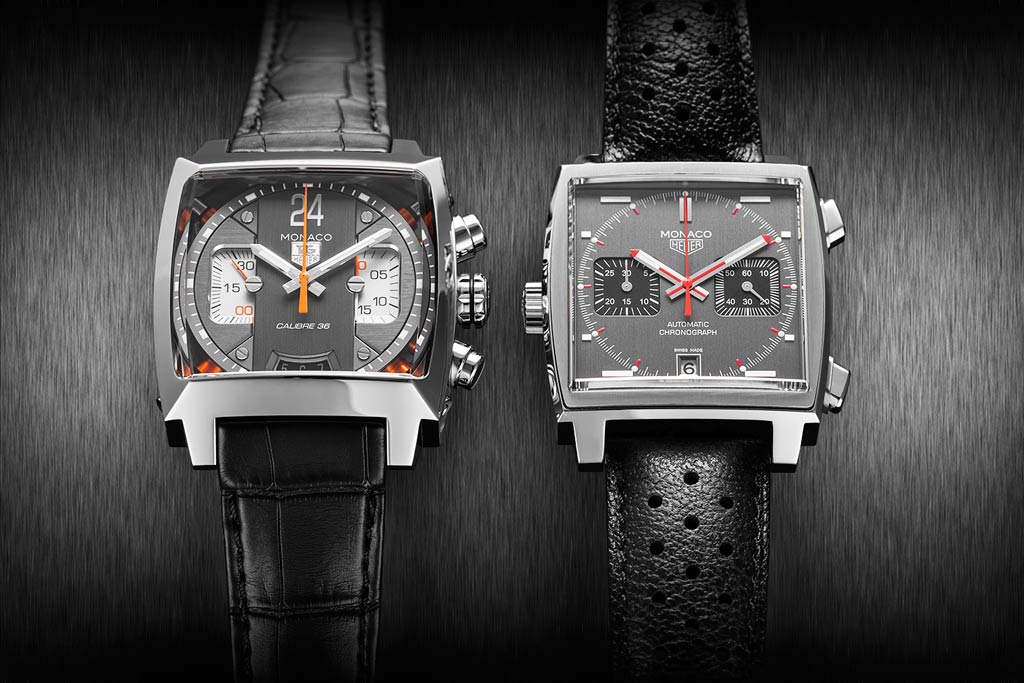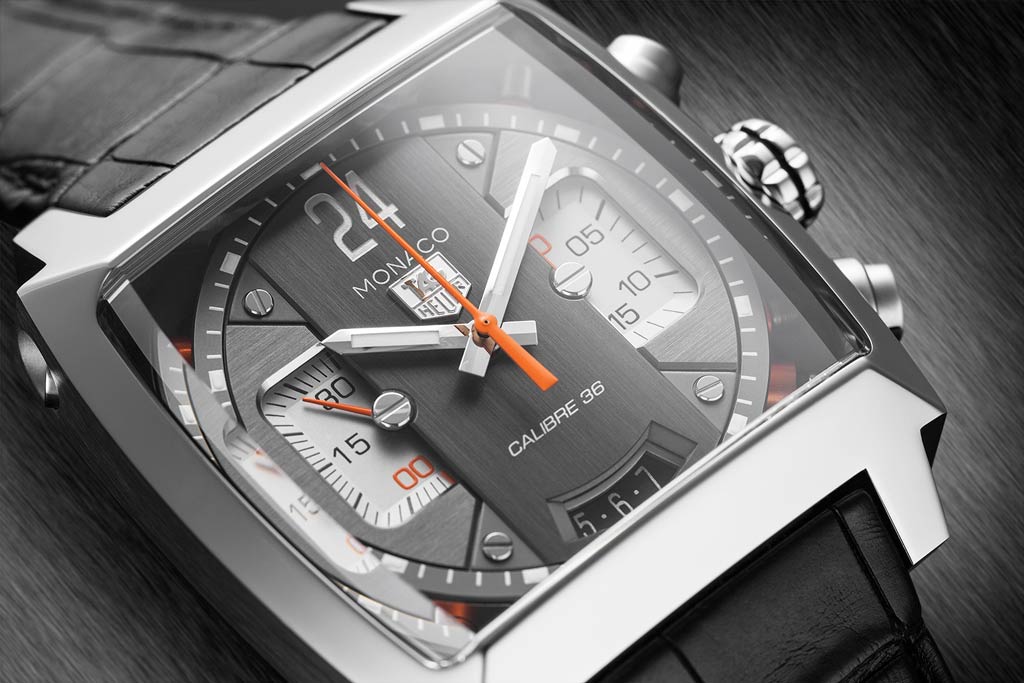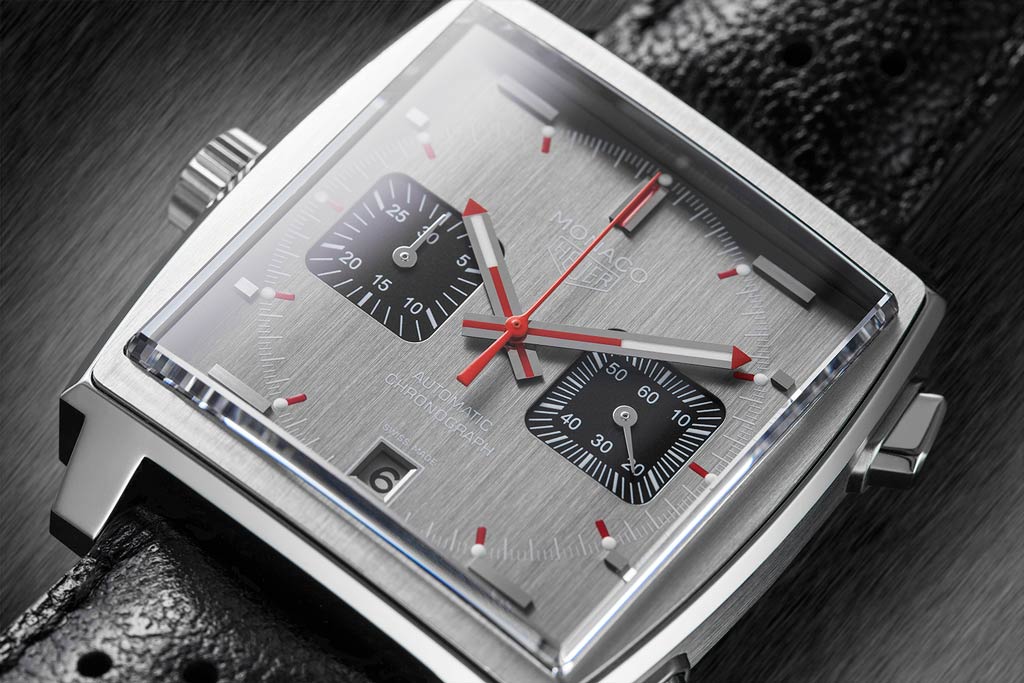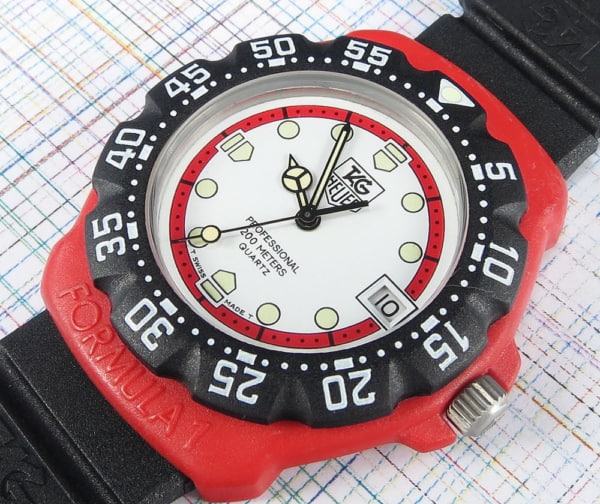The Principality of Monaco, despite being less than a square mile, is the most densely populated country in the world, with over 36,000 people residing there. But once a year that population triples, if just for a weekend. Why? The Monaco Grand Prix.
This sponsored post is brought to you by WatchFinder.co.uk
Formula 1 traces its roots in Monaco back to 1929, around the same time a watchmaker called Heuer launched its first dashboard stopwatch, the ‘Autavia’. Designed for both AUTomobiles and AVIAtion, the Autavia realised a patent that Heuer first held back in 1911, and was the start of a great association between Heuer and motorsport. In that time the company had also produced the first wrist-worn chronograph and was the official timekeeper for several Olympic games, but Heuer’s real home was in among the stench of race fuel and rubber on the world’s motor racing circuits.
By the sixties, a young Jack Heuer was now holding the reins at Heuer, and he saw the excitement and glamour of motorsport as a fast-growing and lucrative business opportunity. In 1962, the company enjoyed two milestone achievements: the first — having a Heuer watch become the first timepiece to go into space — overshadowed the second, the launch of the new Autavia. It was Jack’s first contribution to the wristwatch market, and the start of something special. A year later, and Jack’s self-designed Carrera was introduced. Named after the Pan-American road race, the Carrera was a simple yet effective chronograph design that was a hit with race drivers.
But there was another project going on, this time behind closed doors: Project 99. Under that codename and with the help of Breitling and Hamilton, Heuer was producing the Calibre 11. It would become the world’s first automatic chronograph movement when it was unveiled in 1969, beating Zenith (and Seiko) by just a few months. The Calibre 11 was showcased at its launch in three different Heuer watches: two of them — the Autavia and Carrera — the public had already seen, but the third was something completely new.
Despite the common misconception, vintage watchmaking was rarely undertaken entirely in-house; a lot of components were supplied to the watch industry by a small handful of third-party suppliers. Understanding that Breitling and Hamilton were to release Calibre 11-based watches at the same time as his own, Jack secretly secured a case design from supplier Piquerez on an exclusive contract, hoping to put his competition in the shade with it. So when the round Calibre 11 was unveiled in a large square case with its crown on the left side and pushers on the right, it came as something of a surprise. Named after the historic race circuit, the Monaco 1133 was unlike anything seen before — but it wasn’t just a pretty face. As well as the benchmark automatic chronograph movement — showcased with the visual reminder of the left-hook crown, an awkward place for traditionally manually-wound wristwatches — the Monaco was also the first water-resistant square watch, a technical achievement that underlined Heuer’s dedication to accuracy.
But as every good marketeer knows, having a stand-out product is only half the battle. Jack had an idea to promote the brand; in fact he had several. The first came through up-and-coming F1 racer and friend Jo Siffert, who was already a fan of Jack’s watches. After the F1 sponsorship ban was lifted in 1968, motorsport suppliers began to place their branding on drivers and cars, and with the help of Siffert, Heuer became the first non-motorsport sponsor of F1. For a fee, Siffert not only wore Heuer watches (an Autavia by agreement) and had Heuer branding on his racing overalls and car, he also helped distribute them among drivers.
The second idea happened almost by chance. The producers of the upcoming Steve McQueen film ‘Le Mans’ wanted to replicate Siffert’s World Sportscar Championship racing experience to the last thread of his racing overalls, all the way down to the Heuer patch on his right shoulder. To complete the look, the filmmakers asked Jack to bring a selection of watches to choose from. He brought a couple of Autavias (the correct watch for McQueen to wear), a couple of Carreras and three Monacos. The props department needed three watches for production, so the rest, as they say, is history.
Or so I’d like to say, but I can’t, because it would be a lie. Despite the incredible buzz surrounding Jack’s square watch, the mid-seventies brought a new foe, a technology that made the mechanical timepiece a relic of the past. The quartz revolution came and the Monaco was discontinued. Watch manufacturers that had prospered for decades disappeared overnight, and Heuer was nearly one of them. As the company looked set to close its doors after a buyout by Piaget (and Jack’s subsequent departure), a company called Techniques D’Avant Garde came onto the scene. Part-owner of the McLaren Group and motorsport fanatic, TAG founder Akram Ojjeh made an offer that couldn’t be refused. In 1985, Heuer became TAG Heuer, and the new-look watches that followed drove the company through the eighties and nineties to become one of the biggest selling luxury watchmakers in the world. The relationship between Techniques D’Avant Garde and Heuer culminated in a 1997 re-edition of several vintage pieces, including the Monaco.
The regrowth attracted LVMH to buy TAG Heuer for $740 million in 1999, and although they retained the name TAG Heuer, they also recruited Jack Heuer as an Honorary Chairman. One of the first moves was to reinstate the Monaco as a standard model in the line-up, which is where it has stayed ever since. But, in the true revolutionary spirit of Jack Heuer, it hasn’t remained stationary. In 2004, TAG Heuer demonstrated its technological worth when the Monaco V4 was unveiled, a belt-driven masterpiece of modern watchmaking that spawned a generation of concept watches that challenged the traditional paradigm. Then, the 2009 Monaco Twenty Four wowed audiences with a futuristic appearance inspired by Le Mans prototype racers that was not only commercially available, but also reasonably priced.
The Monaco circuit is a legend of motorsport, and so is the watch that takes its name. Both have had their ups and downs and hopefully both are here to stay. They are as inextricably linked as any partnership in motorsport — more so, even — and as the years wander by and both disciplines evolve, it is my sincerest hope that the memories of their glory days continue to shine through. With vintage pieces climbing in value (one of McQueen’s ‘Le Mans’ Monacos sold recently for $800,000 at auction) and contemporary pieces — especially limited editions — maintaining strong residuals, it seems that’s likely to be the case. At least, it is for the watch; F1 is another matter entirely.
View the full range of TAG Heuer Monaco watches at WatchFinder.co.uk









 Featured Videos
Featured Videos











